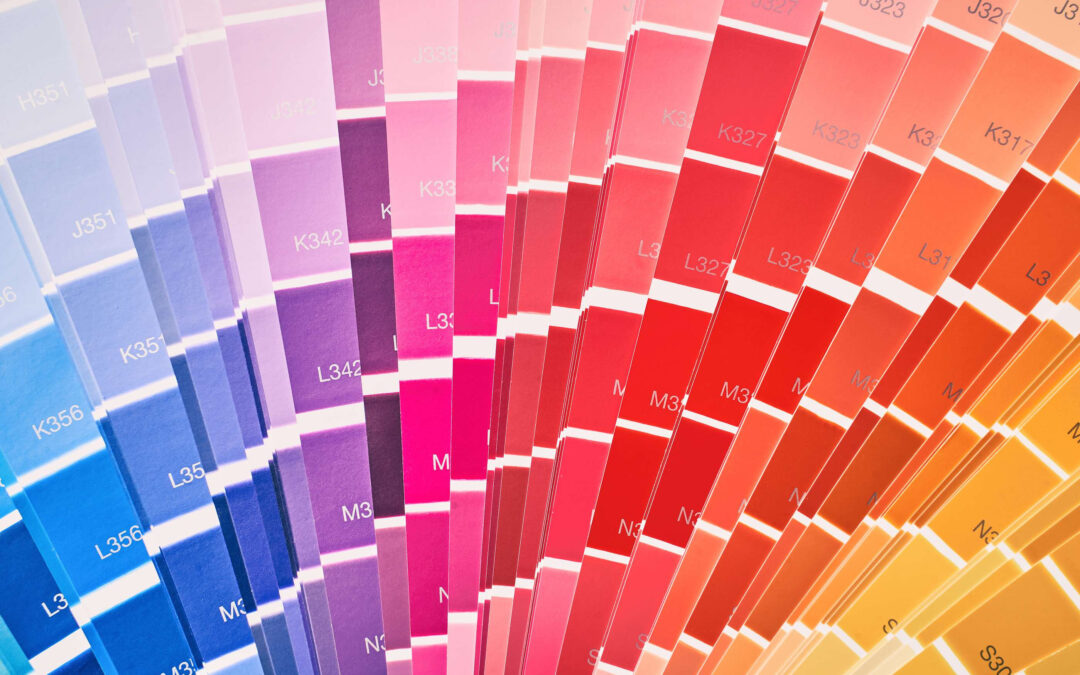Choosing the right paint colors for senior and adult care facilities is not only a matter of aesthetics, but also of health and well-being. Colors can have a significant impact on mood, behavior, and cognitive abilities, especially for those with Alzheimer’s and other dementias and for some individuals with developmental disabilities. Therefore, it is important to understand the psychological and physiological effects of colors, and how to use them strategically in different areas.
The Effects of Colors
According to color psychology, colors can evoke different emotions and associations in people, depending on their personal experiences, cultural backgrounds, and preferences. However, some general effects of colors are widely accepted, such as:
– Red is a stimulating and energizing color that can increase blood pressure, heart rate, and appetite. It can also evoke feelings of passion, excitement, and urgency. Red is the last color that can easily be distinguished by people with dementia, so it can be used to highlight important areas or objects, such as doors, signs, or emergency buttons. However, too much red can also cause agitation, anxiety, and anger, so it should be used sparingly and in contrast with other colors.
– Blue is a calming and soothing color that can lower blood pressure, heart rate, and respiration. It can also evoke feelings of peace, tranquility, and trust. Blue is a good color for bedrooms, bathrooms, and relaxation areas, as it can help people sleep better, reduce stress, and promote healing. However, too much blue can also cause depression, sadness, and coldness, so it should be balanced with warmer colors.
– Green is a relaxing and refreshing color that can improve mood, concentration, and memory. It can also evoke feelings of nature, life, and harmony. Green is a good color for common areas, such as living rooms, dining rooms, and gardens, as it can help residents socialize, engage, and enjoy their surroundings. However, too much green can also cause boredom, fatigue, and envy, so it should be varied with other colors.
– Yellow is a cheerful and uplifting color that can boost energy, creativity, and optimism. It can also evoke feelings of sunshine, happiness, and warmth. Yellow is a good color for activity areas, such as art rooms, game rooms, and libraries, as it can help residents stay alert, curious, and motivated. However, too much yellow can also cause irritation, frustration, and anxiety, so it should be softened with cooler colors.
As a side note, I knew a developmentally disabled gentleman named David who had an extremely negative reaction to the color yellow. When a new owner purchased the facility where David was living, they immediately started upgrades and painted the dining room yellow, unaware of David’s agitation when confronted with that sunny hue. Needless to say, upon witnessing David’s distress, they repainted the dining room another color the following day. David also had an aversion to yellow foods, such as cheese, eggs and bananas. David was my much-beloved autistic brother.
– Purple is a luxurious and elegant color that can enhance mood, imagination, and spirituality. It can also evoke feelings of royalty, mystery, and wisdom. Purple is a good color for personal areas, such as bedrooms, closets, and bathrooms, as it can help residents express their individuality, dignity, and style. However, too much purple can also cause confusion, arrogance, and isolation, so it should be complemented with lighter colors.
– White is a neutral and clean color that can create a sense of space, clarity, and purity. It can also evoke feelings of simplicity, innocence, and freshness. White is a good color for walls, ceilings, and floors, as it can help residents see better, breathe easier, and feel more comfortable. However, too much white can also cause sterility, emptiness, and detachment, so it should be accented with colorful accessories.
How to Use Colors Strategically in Board-and-Care Facilities
Based on the effects of colors on residents, here are some tips on how to use colors strategically in different areas of the facility:
– Use warm colors, such as red, orange, and yellow, to stimulate appetite, activity, and alertness in areas where residents eat, exercise, and learn. However, avoid using too much red, as it can cause agitation and aggression. Instead, use softer shades of red, such as pink, coral, or salmon, or combine red with other colors, such as white, beige, or gray.
– Use cool colors, such as blue, green, and purple, to calm, relax, and soothe in areas where residents sleep, rest, and heal. However, avoid using too much blue, as it can cause depression and coldness. Instead, use warmer shades of blue, such as turquoise, teal, or aqua, or combine blue with other colors, such as yellow, orange, or brown.
– Use neutral colors, such as white, gray, and beige, to create a sense of space, clarity, and comfort in areas where residents need to see, breathe, and feel well. However, avoid using too much white, as it can cause sterility and detachment. Instead, use off-white shades, such as ivory, cream, or pearl, or add colorful accessories, such as pillows, rugs, or curtains.
– Use contrasting colors, such as black, dark brown, or navy, to create a sense of depth, contrast, and definition in areas where residents need to distinguish shapes, edges, and boundaries. However, avoid using too much contrast, as it can cause eye strain and confusion. Instead, use moderate contrast, such as light and dark shades of the same color, or complementary colors, such as red and green, or blue and orange.
– Use harmonious colors, such as pastels, earth tones, or analogous colors, to create a sense of harmony, balance, and unity in areas where seniors need to feel calm, peaceful, and connected. However, avoid using too much harmony, as it can cause boredom and monotony. Instead, use some variety, such as different hues, tints, or shades of the same color, or adjacent colors on the color wheel, such as yellow and green, or purple and blue.
References:
For further information, you can refer to the following sources:
– Senior Living Color Collections – Color Palettes by Sherwin-Williams
– 2023 Color Trends for Senior Living & How to Use Them
– Color in Senior Living Design and the Benefits – Model55
– Long Style Senior Living Mega Trends in Color & Design – PPG Paints
– Decorating for Alzheimer’s and Dementia Care with Wall Murals and Wall Art– The Colors You Should Use in A Retirement Commu
THINKING OF BUYING OR SELLING?
Let the RCFE Resource team of professionals bring proven expertise to help you get the highest price for your Assisted Living or Health Care properties. We are pleased to offer a complimentary, no obligation valuation of your home and business. Please call today for your FREE consultation.
Michelle (949) 397-4506 | michelle@RCFEresource.com
Melvyn (949) 500-3630 | melvyn@RCFEresource.com



